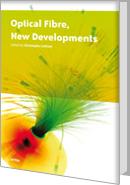
Optical Fiber New Developments
By Sergiy Korposh
Subjects: fibers, technology, communication, optics, optical fibre technology
Description: The optical fibre technology is one of the hop topics developed at the beginning of the 21th century and could do many services for application dealing with lighting, sensing and communicating systems. Many improvements have been carried out since 30 years to reduce the fibre attenuation and to improve the fibre performance. Nowadays, new applications have been developed over the scientific community and this book titled “Optical Fibre, New Developments” fits into this paradigm. It summarizes the current status of know-how in optical fibre applications and represents a further source of information dealing with two main topics: - the development of fibre optics sensors, - the application of optical fibre for telecommunication systems. Over 24 chapters, this book reports specifics information for industrial production and for the research community about the optical fibre potentialities for telecommunication and sensing. It gives an overview of the existing systems and the main credit of this book should go to all the contributors who have summarized the contemporary knowledge in the field of the optical fibre technology. This book could be divided into two parts. The first part covers the applications of fibre based distributed sensors network or local sensor developments for: - Temperature sensing (fictive temperature measurement of bulk silica glass and silica based optical fibres), - Strain sensing, - Chemical sensing (detection of hydrogen leaks, chemical species detection using advanced nanostructured material (carbon nanotubes, tin oxide particles)...), - Electric field sensing in electric power industry, high intensity electric field environments and high intensity telecommunications signal, - Structural health monitoring, - Structures monitoring using distributed sensors network (bridges, building...) - Corrosion measurement using multipoint distributed corrosion sensor based on an optical fibre and the optical time domain reflectometry technique, - Turbidimetry based on optical fibre sensor for environmental measurement in urban or industrial waste water. The second part of the book titled “Optical Fibre, New Developments” deals with the new developments realized in the field of optical fibre communication in particular: - The use of optical fibre delay lines for phase array radar system and microwave signal processing as well as for wavelength selective switching, - The theoretical modelling of all optical Impulse Radio Ultra Wideband generation without optical filter, - The potential of graded index glass and polymer multimode fibre used in low cost 10Gbps small office/home office baseband network and Radio over Fibre systems, - The development of 60-GHz millimetre wave over fibre system based on two innovative solutions using polymer multimode fibre, - The use of graded index plastic optical fibre for broadband access networks up to 40Gbps combined with the special design of the light injection setup, - The development of all optical logic gates based on non linear optical loop mirror - The theoretical modelling and experimental demonstration of fibre based optical parametric amplifier using novel highly non linear fibres (photonic crystal fibres), - The Orthogonal Frequency Division Multiplexing Ultra Wideband radiofrequency (RF) signal transmission over glass multimode fibre by optical means using either parallel RF/ serial optics or parallel RF/parallel optics topologies, - The combined use of back propagation technique with dispersion managed transmission to extend the linear behaviour of optical fibre. - The development of high speed, high power and high responsivity photodiode for Radio over Fibre systems A specific chapter finding applications in the field of biomedical and material processing (power scaling in fibre laser) using large mode area microstructured fibres is also developed. This book is so address to engineers or researchers who want to improve their knowledge of optical fibre technologies in sensing and communicating systems.
Comments
You must log in to leave comments.